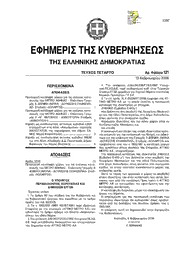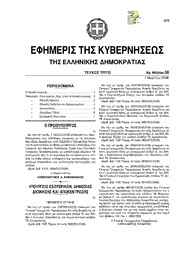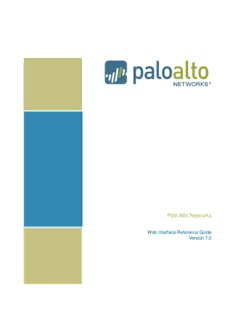
Java Tools for Extreme Programming: Mastering Open Source Tools Including Ant, JUnit, and Cactus PDF
Preview Java Tools for Extreme Programming: Mastering Open Source Tools Including Ant, JUnit, and Cactus
Table of Contents Introduction - 4 Part I - Introduction and Key Concepts Chapter 1 -Introduction to Extreme Programming - 10 Chapter 2 -J2EE Deployment Concepts - 17 Chapter 3 -Example Applications - 27 Part II - Mastering the Tools Chapter 4 -Continuous Integration with Ant - 79 Chapter 5 -Building Java Applications with Ant - 90 Chapter 6 -Building J2EE Applications with Ant - 110 Chapter 7 -Unit Testing with JUnit - 156 Chapter 8 -Testing Container Services with Cactus - 204 Chapter 9 -Functional Testing with HttpUnit - 245 Chapter 10 -Measuring App. Performance with JMeter - 265 Chapter 11 -Load Testing with JUnitPerf - 282 Part III - API and Tag Reference Chapter 12 -Ant Tag Reference - 298 Chapter 13 -Ant API Reference - 319 Chapter 14 -JUnit API Reference - 345 Chapter 15 -Cactus API Reference - 357 Chapter 16 -HttpUnit API Reference - 383 Chapter 17 -JUnitPerf API Reference - 408 Java Tools for Extreme Programming—Mastering Open Source Tools Including Ant, JUnit, and Cactus Richard Hightower Nicholas Lesiecki Wiley Computer publishing John Wiley & Sons, Inc. NEW YORK • CHICHESTER • WEINHEIM • BRISBANE • SINGAPORE • TORONTO Publisher: Robert Ipsen Editor: Robert M. Elliott Managing Editor: John Atkins Book Packaging: Ryan Publishing Group, Inc. Copyeditor: Tiffany Taylor Designations used by companies to distinguish their products are often claimed as trademarks. In all instances where John Wiley & Sons, Inc., is aware of a claim, the product names appear in initial capital or ALL CAPITAL LETTERS. Readers, however, should contact the appropriate companies for more complete information regarding trademarks and registration. This book is printed on acid-free paper. Copyright © 2002 by John Wiley & Sons, Inc. All rights reserved. Published by John Wiley & Sons, Inc. Published simultaneously in Canada. No part of this publication may be reproduced, stored in a retrieval system or transmitted in any form or by any means, electronic, mechanical, photocopying, recording, scanning or otherwise, except as permitted under Sections 107 or 108 of the 1976 United States Copyright Act, without either the prior written permission of the Publisher, or authorization through payment of the appropriate per-copy fee to the Copyright Clearance Center, 222 Rosewood Drive, Danvers, MA 01923, (978) 750-8400, fax (978) 750-4744. Requests to the Publisher for permission should be addressed to the Permissions Department, John Wiley & Sons, Inc., 605 Third Avenue, New York, NY 10158-0012, (212) 850-6011, fax (212) 850-6008, E-Mail: <PERMREQ @ WILEY.COM>. This publication is designed to provide accurate and authoritative information in regard to the subject matter covered. It is sold with the understanding that the publisher is not engaged in professional services. If professional advice or other expert assistance is required, the services of a competent professional person should be sought. Library of Congress Cataloging-in-Publication Data: ISBN: 0-471-20708-X Printed in the United States of America. 10 9 8 7 6 5 4 3 2 1 ACKNOWLEDGMENTS First and foremost, I'd like to thank my wife Kiley Hightower for putting up with me on this tight schedule. I spent many a night at a coffee shop with my laptop working until the coffee shop closed. I really appreciate working with Tim Ryan at Ryan Publishing Group. He orchestrated the work of the editor, contributing authors, co-authors, technical editors, and made this a painless and smooth operation for the authors and team. In addition, Tim provided advice and asked the right questions to guide the book along from the very beginning to the very end. Tim is a true professional. Thanks! Kudos to my co-author Nicholas Lesiecki! When I put together the outline of this book and pitched it to Tim Ryan, Wiley was excited about the project and put it on the finish-darn-quick list. I agreed to an aggressive schedule, and even considered taking time off from work to complete it, but decided not to. Nick was able to bail me out by stepping up to the plate and taking on a lot of responsibility, and eventually he became the co- author of the book. Thanks Nick. 2 Much thanks to Scott Fauerbach! Scott went over the pet store baseline application and simplified it a lot. Originally it was very abstract, but a little difficult to understand. Scott ripped through it and simplified it. Together we made it as simple as possible. Scott and I have been on several teams at several companies— we work well together. Scott also did an excellent job on the session bean case study for the business tier of the Pet store application. Thanks, Scott. Erik Hatcher is a wealth of information on Ant and JUnit. I consulted him many times. It was great having the FAQ moderator for Ant in the office next to you when you are having problems with Ant. Thanks Erik for all of the support. I'd like to thank Andy Barton for allowing me to host the Web site for the book for free, and Ron Tapia and Chris Lechner for setting up the site. Also, Ron helped me debug problems when porting the application from SQL Server to Hypersonic SQL. Thanks to Jon Thomas and Paul Visan for stepping up to the plate and taking on case studies. I would like to thank all of the contributing authors, Paul Visan, Erik Hatcher, Jon Thomas and Douglas Albright. I'd also like to thank Mary Hightower & Richard Hightower (Mom and Dad), Mrs. Wooten my third grade school teacher, and Whitney High-tower for understanding. Last, but not least, I'd like to thank Avery Regier and Tiffany Taylor for editing the book. Avery was the technical editor, and in my opinion he went above and beyond the call of duty. He had great suggestions and was able to contribute ideas that were readily incorporated into the book. Thanks, Avery. Tiffany, the copyeditor, found every misplaced tab and run on sentence—any remaining mistakes I take full credit for. Let's just say Tiffany had her work cut out for her. Thanks, Tiffany. ABOUT THE AUTHORS Rick Hightower is the Director of Development at eBlox, where he leads the adoption of new processes like Extreme Programming, and helps implement coding standards and guidelines for development. Rick is a software developer at heart with over a decade of development experience in creating frameworks & tools, enforcing processes, and developing enterprise applications using J2EE, XML, UML, CORBA, JDBC, SQL, and Oracle technologies. Formerly he was the Senior Software Engineer for Java Architecture at Intel's Enterprise Architecture Lab; there he lead a team of developers, designing and implementing three tier client-server applications, introduced O-O CASE tools to his department, and later created several frameworks using a variety of Java, COM, CORBA, middleware technologies. Rick also created ICBeans and authored the patent application for this technology, which was awarded to Intel. Rick has contributed to several Java books and written articles for the Java Developer's Journal. He has also taught classes on developing Enterprise JavaBeans, JDBC, CORBA, Applets as CORBA clients, and EJB. Nicholas Lesiecki serves eBlox as a Technical Team Lead where he takes charge of team development and architects the company's vertical application framework. Hired as an intern in the middle of the dot-com boom, he has since become a Java master, boasting the 5th highest Java 1 score in the nation according to Brainbench.com. He maintains active committer status on Jakarta's Cactus project and constantly looks for ways to improve code structure through testing and vigorous refactoring. Nick resides in the heart of Tucson Arizona where the fire-play in the sky at sunset sweeps through his mind and washes strange objects upon the shores of his memory. He lives with his wife Suzanne and their two "children"—Edgar the Dog and Juno the Wonder Cat. All three should be fairly regarded as contributors because of their generous donations of Nick's time. Nick loves his wife very much. About the Contributors Doug "Chakka" Albright is a software developer who wrote the Ant tag reference. Jon Thomas is a Senior Systems Engineer for HealthTrio in Tucson AZ. Prior to HealthTrio he developed Products for eBlox, SimplySay (Voice Portal) and GroupSystems.com, in both Java and VB. Originally from Los Angeles he "escaped" to the hidden jewel of the southwest in 1995. He lives in Tucson with his family, where he writes software, prays everyday, and cheers for the Minnesota Vikings (proof that not all prayers are answered the way we want them to be.) Jon wrote the Ant API reference. In addition, Jon wrote the case study that converted the Pet store sample application to use XML/XSL for the presentation. Erik Hatcher has more than 10 years of software development experience, most recently with J2EE. He is a Sun Certified Java Programmer, actively involved in Apache's Jakarta efforts, and is the Ant FAQ maintainer at jGuru. Erik is currently a Senior Java Architect for the University of Virginia's Darden Graduate School of Business Administration." He wrote the case study on using HttpUnit. In addition, he provided a technical support for using Ant when we ran into snags. Paul Visan is a Technical Lead for eBlox, Inc doing exciting J2EE development. He comes from Romania, where he was a close acquaintance of Vlad 'Dracul' a.k.a. 'Dracula' in the western world." He converted the Pet store application to use Struts, and the HttpUnit code to test both the straight JSP version and the Struts 3 version of the application. In addition, he wrote the case study explaining the struts conversion of the pet store application. Scott Fauerbach is a principal software engineer who specializes in software frameworks and development tools in both the user interface and server side realms of Java. Scott has been developing with Java professionally since it was in Beta and authored a complete set of light-weight GUI components called Widgets, which were included with the first versions of Visual Cafй. Scott currently works at FourthStage working on the next level of business-to-business software using Java, SOAP, and JSP. He worked on the Pet Store example, and wrote the case study that moves the business tier of the application to several Enterprise Session beans. Ron Tapia, systems engineer at eBlox, helped setup the website and debug the application running on Linux. Introduction This book describes techniques for implementing the Extreme Programming practices of automated testing and continuous integration using open source tools. Let's unpack that statement. Automated testing and continuous integration are 2 of the 12 core practices of the Extreme Programming (XP) software development methodology. Extreme Programming is a lightweight software development process that focuses on feedback, communication, simplicity, and courage. The full XP process is summarized in Chapter 1; suffice it to say for now that it consists of common-sense development practices practiced religiously and in concert. Two of these common-sense practices are testing and frequent integration. Almost no software development shop would consider leaving these steps out of its process entirely—after all, a system has to be integrated to ship, and it must be tested to ensure that the customers accept the shipment. Thanks to the dot-com shakeout, most of the shops that did skip these practices are now out of business. Still, many software companies either struggle with implementing these processes, or acknowledge that they should be done but claim that "things are just too busy right now" to do them. This book explains and demonstrates the use of software tools to help put these valuable practices into place. Why Spend So Much Time on the Tools? We focus on tools, ironically enough, because XP is a human-centric development philosophy. It recognizes that the key challenges of writing software are human challenges—such as getting people to work together, helping programmers learn, and managing emotions. Its four core values (communication, feedback, simplicity, and courage) are human values. Most books published on XP so far have focused on the human issues: outlining the philosophy, spreading the ideology (Extreme Programming Explained was described by Kent Beck as a manifesto), and talking about the feeling of writing software. By doing so, Kent Beck and the originators of XP have followed their own philosophy: Solve the most pressing problems first. However, the current books do not cover the technical details of implementing some of their practices. That's where books like this one come in. We will explain how to set up continuous integration and automated testing in a Java environment (specifically J2EE, although most of the tools apply generally). Technical detail will be addressed, and we will offer loads of examples to show the tools in action. Specifically, we will cover how to use JUnit, Cactus, HttpUnit, JUnitPerf, and JMeter to write automated tests and how to use Ant (along with the aforementioned tests) to achieve continuous integration. Who Should Read this Book Although this book speaks from an XP perspective, you need not practice XP to benefit from it. Anyone who needs help automating testing and integration can benefit from the tools and practices outlined herein. If you know nothing about Extreme Programming, you should probably read the rest of this Introduction, along with Chapter 1 to get a sense of the practices covered in this book, both alone and in their XP context. In particular, the Introduction touches on the value of automated testing and continuous integration for all developers. This book assumes you are at least a moderately experienced Java developer. Because it covers the application of testing and integration tools to the J2EE platform, this book also expects familiarity with J2EE technologies and development practices. Those who are not interested in J2EE applications will still find plenty of worthwhile material, because most of these tools can be applied to almost any Java (or, in the case of JMeter and HttpUnit, even non-Java) software project. Developers who aren't familiar with J2EE but who want to apply these tools and techniques to a J2EE application may also want to pick up a comprehensive J2EE book like Developing Java Enterprise Applications, 2nd edition, by Stephen Asbury and Scott Weiner. 4 Why Open Source? It is hard to miss the growing prominence of open source development in software engineering. Of course, open source is a buzzword of the moment, but open source development tools do offer compelling advantages over traditional tools—especially for XP development. The advantages fall into two categories. First, open source tools are practical. Second, the open source philosophy is closely aligned with XP. Open source tools offer several practical advantages: (cid:131) The price is right. Open source software can almost always be obtained for free; all the tools we cover in this book can be downloaded at no cost from the Internet. Free software means no immediate overhead for yourself or your company, which is always a benefit, but in this case not the major one. The major benefit in the case of these tools is that their adoption will not be hampered by corporate red tape or management worried about buying into the latest fad. Once you have downloaded JUnit, for example, and you've fallen in love with it and spread it to your team—speeding development and improving quality—no one will want to throw roadblocks in your way. Starting the adoption of XP by asking for $7,500 worth of whiz-bang deployment tools might invite skepticism. (cid:131) The tools are high quality. Programmers use open source development tools every day. Because improving the tool means improving their immediate situation, open source development tools often receive many contributions and bug fixes. Improvement and features come fast and furious. (cid:131) The tools are the standard. Especially in the case of JUnit and Ant, the tools covered in this book are the standards in their field. Countless open source projects use Ant, and JUnit (upon which several of the tools are based) was written by Kent Beck (the godfather of XP) and Erich Gamma (co-author of the OO classic Design Patterns: Elements of Reusable Object-Oriented Software). Synergy between XP and Open Source Extreme Programming and open source development are closely aligned ideologically. Both foster an open, giving style of collaborative development—they share a certain vibe, if you will. Both philosophies acknowledge human weakness—no code is perfect, and the assistance of others in finding and fixing problems is gratefully acknowledged. All open source code is commonly owned (as XP would have it). Many open source projects use and benefit from automated testing, which is especially important when code from a wide variety of sources must be integrated. Both systems demand small, incremental releases. Of course, both philosophies also focus heavily on the code—open source is founded on the premise that reading code is enjoyable, educational, and helpful. The list could continue for quite a while. By using open source tools (and by giving back to the open source community in the form of feedback, assistance, and code) you practice some of the values and processes that make XP great. Read the Source If you are looking for more information than this book provides on any of the tools, the best place to start is the source code. In addition to containing the Javadoc (another handy reference), the source code is the definitive authority on the tool's behavior. Open source software exists because (in addition to liking free stuff) programmers value the ability to dig into the work of fellow coders. By reading the source carefully, you can gain insight into how the program works, insight into the domain, and, if you are lucky, insight into the arcane art of programming itself. If you are unlucky enough to encounter a bug while using the tool, having the source handy can help you determine where the bug lies. Automated Testing: A Summary XP regards testing as central to the activity of software development. To quote Dan Rawsthorne from the afterword of Extreme Programming Installed, "XP works because it is validation-centric rather than product- centric." Testing software continuously validates that the software works and that it meets the customer's requirements. Automating the tests ensures that testing will in fact be continuous. Without testing, a team is just guessing that its software meets those requirements. XP cannot be done without automated testing, nor can development be done successfully without it. All software projects need to satisfy the intended customer and to be free of defects. Tests and Refactoring Another core XP practice is refactoring (changing existing code for simplicity, clarity, and/or feature addition). Refactoring cannot be accomplished without tests. If you don't practice XP, you may not be refactoring religiously. Even the most stable or difficult-to-change projects require occasional modification. To do it right, programmers will have to change the existing design. That's where automated testing comes in. 5 Object-oriented programming (and, to a lesser extent, other programming styles) separates interface from implementation. In theory, this means you can change the underlying logic behind a class or method, and dependent code will handle the change seamlessly. Entire books have been written about this powerful abstraction. However, if in practice the programmers are scared to change the underlying logic for fear of disturbing code that interacts with the interface, then this separation might as well not exist. Comprehensive tests (run frequently) verify how the system should work and allow the underlying behavior to change freely. Any problems introduced during a change are caught by the tests. If Design A and Design B produce equivalent results when tested, the code can be migrated from one to the other freely. With testing in place, programmers refactor with confidence, the code works, and the tests prove it. Types of Automated Tests Unit tests are the most talked-about test in XP; however, they are only a part of the testing picture. Unit tests cooperate with integration tests, functional tests, and auxiliary tests (performance tests, regression tests, and so on) to ensure that the system works totally. Unit Tests: JUnit Unit tests are the first (and perhaps the most critical) line of tests in the XP repertoire. Writing a unit test involves taking a unit of code and testing everything that could possibly break. A unit test usually exercises all the methods in the public interface of a class. Good unit tests do not necessarily test every possible permutation of class behavior, nor do they test ultra-simple methods (simple accessors come to mind); rather, they provide a common-sense verification that the code unit behaves as expected. With this verification, the public interface gains meaning. This approach makes changing unit behavior easier, and also provides a convenient (and verifiable) guide to the behavior of the unit. Developers can consult a test to discover the intended use of a class or method. In XP, unit tests become part of the cycle of everyday coding. Ideally, programmers write tests before the code, and use the test as a guide to assist in implementation. The authors both work in this mode, and we find ourselves unable to live without the guidance and corrective influence of unit tests. After a unit is complete, the team adds the test to the project's test suite. This suite of unit tests runs multiple times per day, and all the tests always pass. This sounds extreme; however, a 100 percent pass rate on unit tests is far more sane than the alternative: a piece of vital production code that does not work. (If the code isn't vital, why is it in the project?) Verifying each class builds a higher-quality system because it ensures that the building blocks work. Unit tests also lead the way toward clean architecture. If a developer writes a test three times for the same code in different locations, laziness and irritation will compel her to move the code to a separate location. JUnit is a lightweight testing framework written by Erich Gamma and Kent Beck (one of the chief proponents of XP). The authors based its design on SUnit, a successful and popular unit-testing framework written by Beck for Smalltalk. The simplicity of the framework lends itself to rapid adoption and extension. All the testing tools covered in this book (with the exception of JMeter, a GUI tool) interact with or extend the JUnit frame. Integration/In-Container Tests: Cactus Unit testing covers Object X, but what about related Objects Y and Z, which together make up subsystem A? Unit tests are deliberately supposed to be isolated. A good unit test verifies that no matter what chaos reigns in the system, at least this class functions as expected. Several papers have been written (many can be found at http://www.junit.org) about strategies to avoid dependencies in unit tests (the core idea is to provide mock implementations of objects upon which the tested class depends). By all means, the unit tests should be made as independent as possible. In their book Extreme Programming Installed, Jeffries et al. have an interesting observation about errors that show up only in collaborations between classes; they say, "Our own experience is that we get very few of these errors. We're guessing here, that somehow our focus on testing up front is preventing them." They go on to admit, "When they do show up, such problems are difficult to find." Good unit testing should indeed catch most errors, and the behavior of the entire system falls under the category of acceptance testing (also known as functional testing); however, a good test suite should verify subsystem behavior as well. Integration testing occupies the gray area between unit and acceptance testing, providing sanity-check testing that all the code cooperates and that subtle differences between expectation and reality are precisely localized. Integration tests may not always run at 100 percent (a dependency class may not be completed yet, for instance); however, their numbers should be quite high (in the 80 to 90 percent range). An important variety of integration tests is the in-container test. The J2EE development model dictates components residing in a container. Components rely on services provided by the container. Interaction with those services needs to be verified. Although some interactions can be successfully mocked-up, creating mocked implementations for all the services provided by a J2EE container would consume time and verify 6 behavior imperfectly. Some services, such as behaviors specified by deployment descriptors, could be very difficult to test, because container implementations differ. The Cactus framework provides access to J2EE Web containers (which in turn usually provide access to other types of containers, such as EJB containers). By allowing tests to exercise code in the container, Cactus spares developers the chore of providing extensive or difficult mock-ups (they can use the real services, instead). This approach also provides an extra measure of feedback, because the code runs in an environment that is one step closer to its production habitat. In the case of single objects that just interact with container services, in-container tests serve as quick-and-dirty unit tests. Acceptance/Functional Tests: HttpUnit Functional testing ensures that the whole system behaves as expected. These tests are also called acceptance tests because they verify for the customer that the system is complete. (In other words, a Web site is not done until it can log in users, display products, and allow online ordering.) Functional tests are daunting in some ways (they are not an immediate productivity aid like unit tests), but they are crucial to measuring progress and catching any defects that slipped past the other tests or result from unimplemented/incomplete features. Acceptance tests are written by the customer (the programmers may implement them) because they are for the customer. Unit testing verifies for the programming team that the Foo class works correctly. Acceptance tests verify for the customer (who may not know a Foo from a Bar) that their whole system works correctly. Acceptance tests are less dependent upon specific implementation: For example, during an aggressive refactoring, the team may decide they no longer need a SubCategory object. If so, the SubCategoryTest goes to execute in the Big Container in the Sky. The team modifies the integration tests (if necessary) to account for the new system structure. However, the functional tests remain unchanged, validating that the user's experience of the catalog navigation system remains unchanged. Functional tests do not need to always run at 100 percent, but they should do so before the software is released. Functional tests often verify specific stories (an XP representation of a customer-requested feature). As such, they can track progress through a development cycle. Each test that runs represents a finished feature. Unfortunately but understandably, no one has written a universal acceptance-testing tool. JUnit can work on just about any Java class, but an acceptance-testing tool must be tailored to the needs of a specific application. For a number-crunching program, acceptance testing could be as easy as verifying inputs versus outputs. For a data-entry application, a GUI recording and playback tool might be necessary. We chose to cover HttpUnit, a testing API that allows programmatic calls to Web resources and inspection of the responses. The framework cooperates with JUnit and exposes the underlying structure of an HTML page to allow easy verification of structural elements. (The response to show_product.jsp returns a table with product prices.) It seemed a natural fit for the focus of this book, because J2EE is heavily concerned with Web components. Acceptance testing the deeper components of J2EE might not even require a special framework because of the low level of presentation logic involved. Performance Tests: JUnitPerf and JMeter Several types of testing exist besides basic verification of function parallel tests (verifies that a new system exactly like an old system), performance tests, validation tests (the system responds well to invalid input), and so on. Of these, performance testing is perhaps the most widely applicable. After all, the most functional system in the world won't be worth a dime if end users give up on the software in disgust. Client-side applications that perform poorly are trouble; server-side applications that drag are emergencies. J2EE applications are usually hosted on servers handling anywhere from hundreds to thousands (and up!) of transactions per minute, so a small section of inefficient code can bring a system to its knees. In this sort of environment, performance ranks with functional (or even unit) testing in its priority. We will not be covering performance profiling tools (critical to solving performance issues); rather, we'll discuss the testing tools used to uncover these problems early. JUnitPerf does unit performance testing—it decorates existing JUnit tests so that they fail if their running times exceed expectations. Such tests support refactoring by verifying that performance-critical code remains within expected boundaries. JMeter provides functional performance testing—measuring and graphing response times to requests sent to a remote server (Web, EJB, database, and so on). With JMeter, customers can write acceptance tests like, "The Web server will maintain a three-second or better response time to requests with a 150-user simultaneous load." 7 Continuous Integration: A Summary Continuous integration is another XP practice that benefits from the use of good software tools. In essence, continuous integration means building a complete copy of the system so far (and running its full test suite) several times per day. By doing this, you can be sure the system is ready to walk out the door (at least as ready as it could possibly be) at any moment. This process must be relatively automatic (a single command, perhaps on a timer, builds and tests the whole system), or no one would ever do it. There are several reasons for spending the set-up time and energy to achieve continuous integration: The customer and team can see progress on the system, integration bugs are reduced, and the tests are run frequently. Visible Progress Continuous integration includes something subtle that goes beyond its practical benefits. It affirms the unity of the team development effort. The built and tested system acts as a center of gravity toward which all development is pulled. As a developer, you know that as soon as you check code into the repository, it will be pulled into the main development stream. You're less likely storm off in your own direction if you know that later that day your code will be playing with the entire system. Anyone can see the state of the working system at any time; and as more acceptance tests pass and new features show up in the built system, coders sense the progress toward the goal and gain confidence in its eventual attainment. (If the built system languishes and acceptance test scores don't rise, this signals serious trouble that might have lain dormant far longer in an un-integrated system.) Reduced Integration Pain If class X doesn't jibe with class Y, it makes sense to know about the problem as soon as possible. The longer the X and Y go before meeting, the fuzzier the authors' memories will be on the subject when the time comes to discover the show-stopping X vs. Y bug. Continuous integration makes sure the incompatible dance partners meet within hours or minutes. Not only does it solve the immediate problem (the defect introduced by incompatible changes), but it forces the developers concerned to examine why the defect might have occurred in the first place: "Ah, I see, Sandra already refactored the CapriciousDictator class, so there's no reason for me to have added the extraEnforcement method to OppressiveRegime." A cleaner (and working!) system results. Tests Run Frequently Unit testing is an integral part of a continuously integrated system. The build is not complete until the unit tests have all passed at 100 percent and the functional and integration tests have run. The result is not only a system that runs but also one that is proven to run correctly. Tests lose value if they aren't run frequently. If they are run as often as the build, and the build is frequent, they provide a constant update on how the system performs. Restart! The first big software project I worked on was a mess…but it had continuous integration. Why? The team, who were a bunch of inexperienced Java developers, couldn't get a reliable build running on anyone's machine. Too many dependencies and libraries had to be linked in for anyone to get them straightened out with the mounting pressure of an impossible deadline. Finally, we had someone cobble together a shell- based build script that compiled all the code that currently resided on the integration server. Because no one could compile individual files locally, in order to see something work, it had to be uploaded to the integration server. With five or six developers working simultaneously, the script was run (and the Web server restarted) about once every five minutes. The developer hoping to integrate had to shout for permission before actually restarting the server: "Anybody mind a restart?!" The result was chaos—but if anyone's changes clashed, we knew about it within seconds. Continuous Integration and J2EE Under the J2EE development model, applications undergo significant customization during assembly and deployment. Wrapping and packaging a full J2EE application requires in-depth knowledge of different archive formats (JARs, WARs, and EARs), deployment descriptors, and methods of deploying applications and components into existing containers. Given the complexity of a J2EE build, an automated build tool is required. 8 Ant to the Rescue Unlike many of the other practices of XP, achieving continuous integration is mainly a technical feat. Once an automated process is in place, using it should be easy (and beneficial) enough that developers barely have to breathe on it to keep the monster rolling. All a shop needs to begin continuous integration is a tool set to help automate and put together a repeatable build. This book will cover Ant, the emerging standard for build automation in Java. Ant allows developers to write tests in an XML build script that calls on Java classes to do its work. The tool is cross-platform (a critical criteria for any Javabased tool) and easy to extend and modify. Ant performs all the basic tasks of a build tool: compilation, archive creation, classpath management, and so on. It also supports test and report automation as well as a variety of miscellaneous useful tasks, such as source control interaction, FTP, and property file editing. This arsenal of predefined build tasks allows developers to automate complicated build processes with ease. After some work with Ant, a Java application can be retrieved from source control, built, customized to its intended environment (production versus integration for instance), tested, and deployed to a remote server with a single command. How This Book Is Organized This book is divided into three parts: (cid:131) Part I: Introduction and Key Concepts. This part begins with an overview of the Extreme Programming methodology—a short course for beginners and a review for practitioners. The overview allows you to see where the practices covered in this book (automated testing and continuous integration) fit into the larger picture of XP. Chapter 2 explains the J2EE build and deployment model, highlighting the need for an automated build tool to assist in the process. The section ends with an introduction to the sample application that will be built, tested, and refactored multiple times during the course of the book. (cid:131) Part II: Mastering the Tools. Each chapter in Part II tutors developers on a particular tool. Chapters 4 through 6 cover continuous integration with Ant, and each of the remaining chapters covers an automated testing tool. The tutorials use code samples to illustrate how to leverage the tools to build, test, deploy, and refactor your code. By the end of Part II, you should be able to use all the tools together. (cid:131) Part III: API and Tag Reference. The reference section delves into the details of the APIs covered in this book. All the classes, variables, and methods (or tags and attributes, in the case of Chapter 12, "Ant Tag Reference") needed to use an API are covered in standard Javadoc style, along with extensive code samples illustrating their use in context. What's on the Web Site All the configuration scripts, build scripts, applications, and other source code in this book are available online at www.wiley.com/compbooks/hightower. Posted along with the sample code and installation instructions are errata (especially necessary for fast-moving open source APIs) and other follow-up information. Information about other books in this series is available at www.wiley.com/compbooks. 9
Description:The list of books you might like

Better Than the Movies

The 48 Laws of Power

The Spanish Love Deception

The Silent Patient

Bioinformatics for Everyone

Lars Gustaf Andersson 2012-01-13

Persistent entanglement due to helicity conservation in excitable media

Premesse a Cassandra

Invertebrate Palaeontology & Evolution

SHORT COMMUNICATION. A new combination and a new subsection in Crepidium (Orchidaceae)

Governing Natural Resources for Africa's Development

Greek Government Gazette: Part 4, 2006 no. 121

Greek Government Gazette: Part 3, 2006 no. 58

Palo Alto Networks

Journal of Chromatography A 1993: Vol 655 Index

Facharztwissen Viszeralchirurgie

Eeshwara Vishwa Rupamu

Punch November 28 1891






